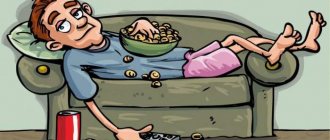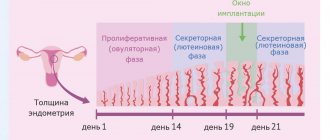Emotional burnout is directly related to work routine, regardless of profession and status. Both managers of large corporations and ordinary employees are susceptible to it. At the same time, the increase in the number of unemployed and the fear of losing a job also contribute to the emergence of symptoms of stress and burnout.
Burnout syndrome is characterized by a state of mental and emotional exhaustion, a feeling that “the batteries are low,” when a person is unable to recover in short periods of time. This syndrome is accompanied by a number of symptoms.
Free webinars on anti-aging medicine Learn about the features of the Anti-Age Expert International School, as well as the opportunities for improving your medical practice every day.
The webinar program also includes fascinating reviews of innovations in anti-aging medicine and analyzes of the most complex clinical cases with recommendations that really work. Find out more
Burnout has become a buzzword, so its true symptoms are often overlooked. If left untreated, burnout syndrome can lead to serious illnesses such as depression or medical illnesses.
Causes of burnout syndrome
It is generally accepted that teachers, as well as doctors and medical staff, are more susceptible to emotional burnout than others. However, even students, pensioners and housewives can suffer from it. After all, emotional exhaustion is not always associated with work; it can also be caused by too heavy a burden of personal obligations.
Let us conditionally divide the causes of this syndrome into personal and external.
- Personal causes of burnout.
Individual resilience and coping skills certainly play a role, but just because a person is very resilient to stress doesn't mean they're immune to burnout. It can affect both people who lack self-confidence and those who are confident, determined and full of energy.
Here are some of the internal reasons:
- overly ambitious and unrealistic goals;
- perfectionism;
- inability to say “no”;
- difficulty expressing feelings;
- Ignore your own needs and instead strive to meet the needs of others;
- poor adaptability;
- constant stress in your personal life;
- lack of rest;
- too high demands on yourself.
- External causes of burnout.
Both the workplace and society can exert significant pressure. Likewise, a difficult life episode or any other major change can lead to burnout.
Some of the possible external causes are:
- pressure at work (for example, the call to do everything faster);
- lack of incentive or overwork;
- lack of recognition and support;
- conflicts and bad atmosphere in the company;
- discrimination or intimidation;
- high competitive pressure;
- too many responsibilities;
- difficulty meeting deadlines;
- lack or absence of autonomy.
Burnout often occurs as a result of a clash of personal factors and external causes. Over time, all of these stresses weaken the immune system and are considered triggers for chronic fatigue syndrome (CFS).
Preventive measures
Burnout syndrome can be completely avoided if you follow these recommendations:
- Strengthen your health through exercise, sports, and keep fit.
- Regularly walk in the fresh air, ride a bike, roller skate, etc.
- Follow a daily routine, sleep at least 8 hours a day.
- Eat right, take a balanced intake of vitamins and minerals, eliminate fats.
- Avoid bad habits.
- Be sure to take at least one day off per week.
- Set your life priorities correctly.
- Do auto-training, meditation, relaxation.
- An excellent option is aromatherapy.
- Talking more often with an attentive, caring listener or laying out your ideas on paper for analysis will clear your head of disturbing “bad” thoughts.
- Trying to properly distribute workloads, does not strive to be the best in any matter no matter what.
- Don't take conflicts at work too personally.
- Learn to quickly switch to another activity.
Psychologists also advise acquiring the ability to accurately determine your priorities, not to chase unnecessary things, not to put generally accepted opinion at the forefront - it is better to be guided by your own.
It is also necessary to be able to tolerate losses and not be afraid of fears. When you lose energy and meaning in life, you need to believe: new forces will come and a different incentive will arise.
Symptoms of emotional burnout
According to the WHO, burnout is a work-related phenomenon and is not considered a disease. Burnout or professional exhaustion is a syndrome that is considered to be the result of chronic work stress that is not properly managed.
Symptoms of burnout syndrome develop over a long period. And even during weekends and vacations, as a rule, a person does not get better.
How does burnout manifest? Although it is not officially considered a disease, some of its symptoms are similar to those of depression.
Let's look at the most common ones:
- Emotional exhaustion. This is one of the main signs of burnout. A person suffers from an extreme lack of energy, it is difficult for him to start work and he feels exhausted. In general, the need for rest continues to grow, but a “burnt out” person is unable to fully rest. In addition, he feels increasingly depressed, believing that he cannot cope with his tasks and expectations.
- Reduced work efficiency. Emotional and physical exhaustion affects professional activities. Typically, productivity decreases gradually, concentration decreases, and errors become more frequent.
- Behavioral changes. One of the common symptoms of burnout is depersonalization, which manifests itself in some indifference and cynicism. Empathy and compassion for others, whether colleagues and clients, family and friends, are weakened. A burnt out person is too demanding of others and can even cause pain. As a result, his relationships with others may deteriorate sharply.
- Psychosomatic symptoms. Burnout can have physical consequences. Typical symptoms include:
- fatigue;
- headache;
- sleep disorders;
- back pain and muscle tension;
- cardiopalmus;
- high blood pressure;
- digestive problems (diarrhea, constipation and vomiting).
- Other symptoms of burnout. Its symptoms may be different in men and women. Here are some of the possibilities:
- feeling of lack of time;
- anxiety and nervousness;
- increased risk of accidents;
- apathy;
- feeling exploited;
- feeling of helplessness and despondency;
- feelings of worthlessness;
- decreased creativity;
- difficulty making decisions;
- depression, even depressive attacks;
- in some severe cases, suicidal thoughts.
Sexual dysfunction may also occur. And if a person consumes too much alcohol, caffeine or nicotine, it can lead to other physical problems. Some of these symptoms are common to other conditions, such as chronic fatigue syndrome.
Burnout is a multifactorial evil. In other words, people suffering from one of the symptoms are not necessarily experiencing burnout. On the other hand, if several of these signs appear at the same time, it may be time to be wary.
Online training in Anti-Age medicine Learn the intricacies of anti-aging medicine from anywhere in the world.
For the convenience of doctors, we have created the Anti-Age Expert online training platform: Lectures from our educational programs are consistently posted here, and are accessible 24/7. Doctors can study the materials as many times as necessary, ask questions and discuss interesting clinical cases with colleagues in special chats. Find out more
Causes and risk groups
There is currently no consensus on what triggers the development of burnout syndrome. A number of experts argue that this is facilitated by organizational problems and stress-related professional activities, that is, this is the body’s response to chronic stress. Others cite personal factors as the main reason. There is an assumption that SEV is contagious.
Thus, a professional crisis is not only the consequences of contacts with a large number of difficult people and difficult circumstances, but also:
- workaholism;
- intense, never-ending rhythm of work;
- unclear assigned tasks;
- repetitive actions are monotonous, like on an assembly line;
- insufficiently encouraged work in terms of psychological and material terms;
- feeling underappreciated.
People with the following character traits are also at risk of developing burnout syndrome:
- idealists;
- maximalists who strive to do everything perfectly;
- dreamers who inadequately assess their abilities and real possibilities;
- overly responsible people who are ready to sacrifice their own interests to complete a task.
Burnout syndrome also threatens those who have the habit of increasing their performance with the help of various stimulants, such as cigarettes, energy drinks, alcohol drinks, and special drugs (drugs). They only cause addiction, and each time you need more and more of them to get the desired effect. The body “doesn’t like it”; it becomes exhausted and resists in various ways.
Profession, as practice shows, now matters little, since the volume of work is growing all the time, the team and the work environment are becoming increasingly difficult to perceive, openness and honesty in relationships disappears, a person has no opportunity to influence important decisions, and he doubts his usefulness .
Individuals who hate work but are unable to quit because of the need to provide for their family are susceptible to burnout syndrome.
As already mentioned, burnout syndrome is not alien to housewives. This is not strange: housework is monotonous, and women are often haunted by the thought that no one notices or appreciates their work. The same picture applies to people who have been caring for seriously ill relatives for a long time. Their overwhelming sense of duty is overshadowed by hopelessness and strong resentment at injustice.
Now about the representatives of the so-called bohemians: artists, painters, writers, etc. A professional crisis overtakes them in the event of a negative perception of their work by the public and critics. Unrecognized talent stops believing in their own abilities - and professional burnout occurs.
From all of the above, we can draw a simple conclusion: CMEA threatens any person who does not receive support and approval, but who stoically does not stop doing his work, and is even overloaded with it.
Pathogenesis of emotional burnout
From an evolutionary and physiological perspective, humans are adapted to acute stress and respond to it with either flight or fight. This is the hereditary mechanism that has allowed the human species to survive.
The physiological response to stress occurs in three stages:
- Alarm phase.
It implements the hypothalamic-sympathetic-adrenergic axis, which involves the hypothalamus (a region of the brain), the sympathetic nervous system (or activator) and the medullo-adrenal glands.
The sense organs (vision, hearing, smell, touch) perceive the stress factor and transmit information to the limbic system of the brain. The hypothalamus, a specific area of the brain, receives this information and triggers a range of responses that facilitate flight or fight. The first reaction is immediate and follows the path of the autonomic nervous system: it occurs automatically, not consciously.
The so-called sympathetic nervous system, a component of the autonomic nervous system, produces norepinephrine and activates the adrenal medulla (the central parts of the adrenal glands, the glands located above the kidneys), which in turn produce epinephrine and norepinephrine.
These two substances, called catecholamines, increase heart rate, pulmonary ventilation, alertness, sensory acuity (pupil dilation), and blood sugar levels. The muscles tense, and so do the smooth muscle cells of the artery walls, hence the increase in blood pressure.
The whole body is ready to fight or flee almost immediately. Everyone is familiar with the expression “adrenaline rush” and the sensations associated with it.
In addition, norepinephrine activates two other areas of the brain: the amygdala and hippocampus. The amygdala analyzes and evaluates the severity of a situation compared to past experiences. The hippocampus is responsible for remembering experienced events and recording new information.
- Resistance phase.
It concerns the hypothalamic-pituitary-adrenal axis or corticotropic axis, in which the hypothalamus, pituitary gland and cortico-adrenal glands intervene.
If the stressor persists, the hypothalamus activates the pituitary gland by producing corticotropin-releasing hormone or corticoliberin. The pituitary gland, in turn, activates the adrenal cortex, which produces cortisol, also called hydrocortisone.
Cortisol is used to release energy from fats and carbohydrates to keep muscles working. In addition, cortisol, like the drug cortisone, has an anti-inflammatory effect: a person can run very fast or get injured, but does not feel pain at this moment.
Cortisol also tends to travel into the brain and activate the hippocampus, an area of the brain involved in memory and learning. In a physiological situation, the hippocampus slows down the hypothalamus. This is negative feedback control of the stress response.
During the resistance phase, the corticotropic axis remains active, with corticotropic hormone and cortisol levels increasing and remaining high. This phenomenon is called the burning phase.
Corticoliberin has a depressive and anxiety-producing effect, which explains the symptoms of people in a state of chronic stress: depression, anxiety.
Elevated cortisol levels are toxic to the hippocampus, which gradually loses its ability to slow down the hypothalamus and the ability to remember events. This explains the deterioration of immediate memory and learning ability.
In addition, levels of certain neurotransmitters fall in the central nervous system (brain and spinal cord). For example, dopamine (“the hormone of happiness”), associated with attention, initiative, pleasure, and serotonin (“the hormone of well-being”), associated with a feeling of completeness and satisfaction.
- Exhaustion phase.
Under conditions of chronic occupational stress, modern man can neither run nor fight most of the time. He experiences repeated stress, sometimes for long periods of time.
When the burn-out state persists, the adrenal cortex becomes exhausted and cortisol production drops. Hypotension may be a sign of adrenal fatigue.
There comes a point when a person no longer has energy. He is in a situation of physical, mental and emotional exhaustion. He is depressed, deficient in dopamine and serotonin. This phenomenon is called the burnout phase.
The person becomes susceptible to infections. In people with burnout, there is a decrease in the activity of some immune defense cells, natural killer cells, and a decrease in the CD4 + / CD8 + ratio. CD4+ T cells are lymphocytes (white blood cells) that enhance the immune response.
CD8 are suppressor or cytotoxic lymphocytes: they are able to prevent certain reactions and kill abnormal cells. The normal ratio is 2:1. A decreased CD4+/CD8+ ratio suggests abnormal functioning of the immune system with possible immunodeficiency.
Burnout is associated with increased levels of proinflammatory cytokines, chemical mediators of inflammation, and reactive C protein, another marker of inflammation.
VEGF (Vascular Endothelial Growth Factor) increases blood circulation in people with burnout. VEGF causes the formation of new blood vessels (which is unfavorable in cancer) and increases microvascular permeability.
Conversely, the protein BDNF (brain-derived neurotrophic factor) reduces circulating levels. BDNF promotes the survival of existing neurons and the formation of new ones. It is present in the central and peripheral nervous system, with prominent activity in the hippocampus and cerebral cortex. Decreased BDNF levels suggest a decrease in the brain's ability to maintain and repair itself.
How the process develops:
1. At the moment when euphoria appears in the form of “dizziness from success” in work (the project was a success, brought good profits, etc.), a person often strives to work more so that next time it will turn out even better. Sometimes to the detriment of personal life, friendship, and recreation. After all, they do not bring profit and the pleasure from them is too ordinary. The first stage of burnout is also called “falling in love” or “honeymoon”; a person is so passionate about a new job, “fired up” with a new idea, that he cannot think about anything else, talks only about this, puts his whole soul into a new project. During this period, the immune system is mobilized, the person practically does not get sick, and there is a feeling of flight “not walking, but soaring above the ground.”
2. At the second stage, which is called “working” or “lack of fuel,” a person continues to work hard, but he already begins to feel tired, increased fatigue, but for now additional rest helps eliminate it. In the absence of additional motivation and stimulation, the employee’s interest in work begins to decrease. But at the second stage, a person can quickly get himself into a working state, for example, by drinking a cup of strong coffee or tea.
- the muting of emotions begins, the severity of feelings and freshness of experiences is smoothed out;
- the specialist suddenly notices: everything seems to be fine so far, but... it’s boring and empty at heart;
- misunderstandings arise with clients (students, patients), a professional among his colleagues begins to talk about some of them with disdain.
- friends and family are offended that you suddenly began to pay less attention to them.
3. At the third stage of emotional burnout, which is called “exhaustion,” gradual emotional burnout actually occurs if preventive measures are not taken urgently. The person continues to work hard, but now the work no longer brings joy (the enthusiasm that was at the first stage gradually disappears). A person does everything more slowly; the same work takes much more time than at the first stage. Accumulated fatigue dulls emotions, and it becomes almost impossible to get yourself into a working state, for example, with the help of strong coffee or tea. The body requires rest, but even weekends (vacations) are not able to bring a person into working condition, and a feeling of chronic fatigue appears. At the third stage:
- mood deteriorates - a person feels irritable (and this irritation exceeds the reason that caused it) and it becomes more difficult for him to restrain negative feelings when communicating with people, conflict increases;
- positive emotions disappear, some detachment appears in relationships with family members;
- the range of emotional sensations narrows (the so-called flattening of affect), when nothing brings joy or pleasure. As with anesthesia: brightness is lost, emotional dullness is noted;
- hostility begins to gradually manifest itself in the presence of clients (students, patients) - at first it is barely restrained antipathy, and then outbursts of irritation. Such behavior of a professional is an unconscious manifestation of a sense of self-preservation during communication that exceeds a level that is safe for the body;
- out of habit, such a person may still retain external respectability and some aplomb, but his eyes lose the sparkle of interest in anything, and an almost physically tangible coldness of indifference settles in his soul;
- optimism and the desire to make long-term plans disappear;
- ideas about the values of life become dulled, the emotional attitude to the world “flattens”, a person becomes dangerously indifferent to everything, even to his own life;
- relationships with loved ones are deteriorating, and these are not just quarrels, but deep emotional alienation, and, as a result, the space for restoring mental strength is limited. After all, when you were busy with work, you did not feel that you were moving away from your loved ones, and now you have become “distant” for them;
- a state of anxiety and dissatisfaction arises; returning home, more and more often I want to say: “Don’t bother me, leave me alone!”;
- it seems to a person that he is underestimated, he has put his “whole soul” into his work, but does not feel any response, it seems to him that no one notices all his achievements at work, conflicts with colleagues are possible, envy and a sense of rivalry may appear in relation to the successful colleagues. All successes of colleagues are perceived negatively by “upstarts,” and conflicts with management are possible. Thoughts appear: “Isn’t it time to change jobs?” your legs “don’t go to work.” The legs seem to become weak, the former lightness of gait, which was in the first stage, gradually disappears.
- at the third stage, the imbalance between give and take is very acutely felt. In order to maintain both physical and psycho-emotional health, this balance should not be disturbed. How much physical and emotional strength a person puts into work, the same amount should be received back:
- in the form of relaxation , where there are no thoughts about work, but there is a favorite hobby, or some favorite activity: yoga, meditation, massage, gym, bathhouse, meeting with friends, even a computer game, the main thing is that a person can completely relax and take your mind off thoughts about work. Do not forget that with prolonged stress, the muscles are constantly tense and the body needs relaxation to maintain health. One day a week should be completely devoted to yourself (there should be a personal space where you feel comfortable both physically and emotionally);
- in the form of a positive assessment of your work - praise, admiration, just words of support. If you can’t wait for words of support from your colleagues, forget about pride and ask management directly “did they like the way you implemented the latest project, are they satisfied with your work in general.” Remember how a cat behaves when it wants to be petted; it will not leave a person until it receives its portion of positive emotions. Learn from the cat! Believe me, it’s better to ask for a compliment than to live for months with the feeling that you are underestimated, and no one notices your efforts, because you didn’t just work for a salary, but put your whole soul into your work, and you should know how this work is assessed from the outside other. At the same time, do not forget to praise yourself for every small step forward: “I did it! I'm done! I managed! I’m super!!!”, it’s not for nothing that they say: “If you don’t praise yourself, no one will praise you!” You can give yourself a gift, for example, in the form of shopping, a trip to a beauty salon, a trip to nature, to the sea - the main thing is that the emotional response is equal to the emotional effort spent, then the balance between “give and take” can be maintained and emotional burnout will not occur and you can return to the second or even the first stage.
4. If a person at the third stage does not take any preventive measures, the fourth stage of burnout occurs, which is called “crisis” or “devastation”, when stress accumulated over a long period of time manifests itself at the body level - bodily symptoms appear - insomnia, loss of appetite, problems with the heart or stomach, the immune system becomes so weakened that the person constantly feels various ailments. Not only health problems are possible, but also long-term, protracted depression. Often at this stage there is a breakdown in relationships with loved ones, divorce. At the same time, on an emotional level, worries about work become less. Work becomes easier, but any work is done as if mechanically, without a soul, since a person at this stage is already “emotionally burnt out.” A person simply sits at work for the allotted time, strives to leave early if possible, and take sick leave. At the fourth stage, a person does not receive any satisfaction from work, goes to work as if it were hard labor, does not agree to stay even a minute after work (although at the first stage he easily stayed for hours, and even took work home). Here the proverb comes to mind: “From love to hate there is one step” and this step has been taken... There is a desire to urgently change jobs, or better yet “retire” right away. At the fourth stage, a person is not able to show sympathy and understanding towards people, he can only emit these feelings, a feeling of cynicism appears. A person feels a sense of neglect towards clients; at this stage it seems to a specialist that the client himself is to blame for all his problems, and he certainly deserves them. In essence, a person in the helping profession at the fourth stage becomes professionally unsuitable. And then the circle is closed: if you don’t maintain relationships for a long time (with your wife, children, friends, yourself outside of work), they don’t develop. A person is deprived of any space in which he feels comfortable and safe, except for work. But now it is work that becomes the source of negativity: the more work, the deeper and more extensive the devastation.
Stages of emotional burnout
This syndrome has several classifications. Let's consider one of them, which distinguishes 5 main stages.
- Honeymoon phase.
It is characterized by not knowing that something is wrong. At this stage, it is only some dissatisfaction or concern that does not raise suspicions.
The honeymoon phase often happens when we change jobs or take on new challenges in an old workplace. At this moment, we are still full of energy and optimism and feel the need to show our best side.
The most common symptoms of burnout in the early stages are:
- Desire to readily take on responsibility;
- Sustainable energy levels;
- Feeling that something is wrong, but ignoring it;
- The desire to prove yourself and go beyond your own capabilities;
- A state of constant vigilance;
- Increased energy, as if you are on an adrenaline rush.
- The onset of stress.
The second stage of burnout occurs with more obvious symptoms. This usually starts with recognizing that some days are harder than others. During these difficult days, employees typically find it difficult to concentrate, stay awake, feel sluggish, and worry about unfinished work. All of this begins to take a toll on their emotional and physical well-being, which only gets worse over time.
Here are some of the most common symptoms of stage 2 burnout:
- Anxiety;
- Problems with decision making;
- Change in appetite;
- Fatigue;
- Forgetfulness;
- Rapid heartbeat and headaches;
- Lack of sleep;
- Irritability;
- Problems with focusing.
- Chronic stress.
If you are constantly in nervous tension, you gradually move into the stage of chronic stress. It impairs the ability to concentrate, which seriously reduces productivity and performance. In turn, you will begin to feel powerless and unworthy, losing control of everything you do. You will also feel pressured by daily tasks to the point where you will feel like you need to run away from your responsibilities. All of this can lead to feelings of incompetence.
Chronic stress can take a huge toll on mental and physical well-being as it deepens and intensifies the symptoms listed in stage two. However, unlike the second stage, you will not be able to manage your emotions as well, which can lead to sadness, resentment and aggressiveness.
Some of the symptoms of the chronic stress phase are:
- Anger or aggressive behavior;
- Apathy;
- Exhaustion;
- Decreased sexual desire;
- Increased alcohol/drug consumption;
- Increased caffeine consumption;
- Physical illness;
- Touchiness;
- Social isolation.
- Burnout.
It occurs when all these symptoms become too frequent and even considered a normal part of life. However, these signs, if present over a long period, lead to physical and mental problems that impair our quality of life.
Some of the most common symptoms of the burnout stage include:
- Feeling empty;
- Pessimistic outlook on work and life;
- Physical symptoms worsen;
- Diffidence;
- Complete disregard for personal needs;
- Wanting to leave work or friends/family;
- Habitual burnout.
This is the last of the five stages and occurs when burnout becomes a part of life and all attempts to recover from the situation fail. Habitual burnout affects your career, your relationships, your health—every aspect of your life. Habitual burnout usually requires medical attention because it can be difficult to deal with alone.
Some of the common symptoms of habitual burnout include:
- Chronic sadness;
- Depression;
- Chronic physical and mental fatigue.
Emotional burnout in relationships: how to determine, how to explain, how to overcome?
If a person has problems at work, it is almost inevitable that they will also affect the partnership. Burnout caused by occupational stress can change feelings about your partner and behavior in relationships because chronic exhaustion, pain, feelings of powerlessness and despair overshadow lively and positive impulses. Passion and libido, curiosity and play instinct, willingness to take risks, enthusiasm and thirst for adventure are greatly suppressed or completely disappear from the spectrum of emotions. Changes in personality and behavior can go so far as to lead to alienation in a marriage or relationship.
If a layoff occurs, an important part of the joint income is lost, this usually means that plans for the next few years will have to be canceled. Consequently, close relatives also suffer from the problem of emotional burnout: they also have to get used to a different daily life, they also reduce their needs.
Quarrels and separation due to burnout are not uncommon. Working to the limit forces you to sacrifice your family. Irritability, insomnia and conversations around work become a serious burden for both partners. Add in weak self-esteem and the inability to draw personal boundaries - and this can lead to complete overload. If you are about to separate due to burnout and are thinking about divorce, take your time. In the end, everything can be changed.
When one partner suffers from burnout, there is little the other can do to help. First of all, the person concerned needs professional help. In such cases, psychotherapy usually helps. But, of course, there are some types of behavior that signal: a loved one is nearby and will always support.
The advantage is that burnout syndrome is treatable and does not spread for a long time. In most cases, conditions return to normal within a few months. Unfortunately, by this time the relationship had already suffered quite a lot from the stressful period, and with it from negative feelings towards the partner. Fortunately, if the stressor goes away, the situation improves. Thus, under certain circumstances, you can get your relationship back in a relatively short time.
Remember that burnout is temporary. Therefore, you should think about whether you really want to break up or whether you have the patience and strength to wait until everything gets better.
Consequences of emotional burnout
Ignoring burnout can have serious consequences. They can be like this:
- Chronic fatigue;
- Insomnia;
- Alcohol or substance abuse;
- Heart disease;
- High blood pressure;
- Diabetes mellitus type 2;
- Vulnerability to disease.
Therefore, it is so important to diagnose this syndrome in time and try to correct it as soon as possible.
“Emotional burnout can lead to quite serious consequences. It's not just weight changes or sleep disturbances. A whole cascade of pathological reactions in the body is launched.
The menstrual cycle is disrupted, ovulation disappears, which can lead to infertility, PMS develops, and many develop benign tumor-like diseases - fibroids, cysts, mastopathy, endometriosis. Some women begin to bleed, while others may miss their periods. Memory and concentration decrease significantly, it becomes difficult to work, study, and absorb new information. The nervous system cannot adapt to what is happening and fails. For some, this can result in neurosis or aggression, for others - in depression. Depletion of the entire endocrine and immune system leads to the development of a variety of diseases against this background - from systemic to oncological. And it is very important to stop this process in time.”
Lyudmila Vladimirovna Mudragel
obstetrician-gynecologist, gynecologist-endocrinologist, ultrasound diagnostics doctor, specialist in aesthetic gynecology, doctor of integrative and anti-aging therapy
Experience: 23 years
Emotional burnout in adolescents and children: causes, symptoms, how to help a child?
Sometimes it seems to teenagers that life is full of problems. Modern children feel tension, fatigue and irritation more often than before. A teenager in such a state comes up with reasons not to go to school, his mood disappears, he does not sleep at night, and experiences anxiety and fear. Even his favorite hobbies cannot save him, and communication with his family turns into a chain of quarrels and misunderstandings.
The high pace of modern life, exorbitant demands from family and school, regular workloads, oversaturation of information, everyday conflicts - all this causes tension. The picture is complemented by intense physiological and personal development and rapid maturation during adolescence. If tension becomes chronic, stress does not find a way out and accumulates, there is a high probability of developing emotional burnout.
The main task of parents is to recognize the problem in time and cope with the child, and in the future, teach children to work with such difficulties on their own.
Panic, accusations and punishment will not help. Talk to your child in a calm environment. Ask him about his problems, provide emotional response and support. Allow the student to rest - do not wait for him to be overwhelmed by a flood of tension.
Switch your child to a gentle regime, give him the opportunity to play more and do his favorite things. Visit specialists - a pediatrician and a child psychologist will talk about supportive measures, establish contact with the school teacher. Help your child develop a daily routine, tell him about the importance of alternating study and rest, and at the same time check how you are doing with organizing work processes and managing time.
Does your child not share his problems and experiences? Carefully find out whether everything is fine in his life. Use the "Where are my kids" app with Surround Sound, GPS navigation and smartphone usage statistics. But don’t forget that you need to talk to your child before installation!
Diagnosis of emotional burnout
Burnout is quite difficult to diagnose because it has no specific physical symptoms. However, its treatment is more effective when it begins after the first signs appear, which we described above.
You can seek help from a psychotherapist or an anti-aging doctor. The doctor will collect a family history, analyze working conditions and offer testing.
For this purpose, for example, there is the Maslach Burnout Inventory (MBI), which is used to assess the degree of emotional burnout and consists of 22 questions.
There are other questionnaires of the same focus: the Oldenburg Professional Burnout Questionnaire, the Copenhagen List, the Shirom-Melamed burnout indicator model and others. However, none of these tools provide a diagnosis that needs to be supplemented by clinical examination.
You will likely need to undergo laboratory tests to rule out underlying inflammation, infection or allergies, and analyze your eating habits to suggest any nutritional deficiencies.
“For a long time, we write everything off as fatigue or a difficult period in life. And only when problems arise at work, relationships in the family or with a partner deteriorate, or depression sets in, the question arises, where to go for help?
Since burnout leads to significant changes in hormonal levels, menstrual irregularities, decreased libido, weight changes, sleep disturbances, and the development of anxiety, such women turn to a neurologist, an endocrinologist, or a gynecologist for medical help.
But more often than not, the correct diagnosis is not made, and they do not receive effective therapy. That is why it is important to work with an integrative doctor who can understand the cause of what is happening and comprehensively influence the body, restoring all damaged links in this chain. Only an integrated approach to the treatment of such conditions can be successful.”
Lyudmila Vladimirovna Mudragel
obstetrician-gynecologist, gynecologist-endocrinologist, ultrasound diagnostics doctor, specialist in aesthetic gynecology, doctor of integrative and anti-aging therapy
Experience: 23 years
Treatment of SEV
The main mistake of many people who are overtaken by burnout syndrome is to underestimate the danger of this disorder. They believe that they just need to overcome themselves, ignore mental decline and overwork, and still finish the job. But it is vital for them to seek advice from a specialist who will help cope with the disease.
The psychologist will give the patient the opportunity to look at the current situation from the outside, listening carefully to the visitor and analyzing the reasons that led to it.
The main advice of a specialist in this case: slow down. It involves not doing the work at a slow pace, but dividing it into stages, between which there are long pauses. Moreover, the latter must be filled with some pleasant activities. Of course, in this case, it’s easiest for housewives: you can cook soup and lie down with an interesting book; iron your clothes and watch the next episode of your favorite movie. This is a kind of reward for the work done, giving satisfaction and incentive for new achievements.
However, a person who is at work cannot take such breaks. It is advisable for him to either take sick leave for a while or go on vacation. The period thus carved out should be used to recuperate.
Another tip: divide a sheet of paper into two parts, in the first write the reasons for burnout, and in the second - the way to solve the problem. So, if the task at hand is unclear, it makes sense to clarify with your superiors what kind of result they want to get. Or if you are not satisfied with the salary, then you can ask for a raise, a transfer to a higher paid position, or start looking for a new job.
This approach to problems allows you to clearly identify them, draw up a plan to eliminate them, and prevent further exacerbations.
And you should not neglect the support of loved ones and friends - they should know about your emotional burnout and the reasons that led to it, and support you in every possible way.
Treatment of emotional burnout
Treatment depends on the cause and must be individualized for each patient. Self-medication with sleeping pills is strictly not recommended, as it can lead to drug dependence.
If burnout is work-related, the doctor may recommend taking a vacation, as well as the following steps to correct the syndrome:
- Psychotherapy. Cognitive behavioral therapy involves gradually exposing the patient to anxiety-provoking situations and helping them change their behavioral responses.
- Medicines. In some cases, antidepressants (serotonin reuptake inhibitors) may be prescribed. Dopamine and norepinephrine reuptake inhibitors are sometimes combined. These substances aim to increase the concentration of these neurotransmitters in the intersynaptic spaces, the connection points between neurons.
There are also natural treatments for burnout:
- Relaxation techniques. They reduce stress and improve heart function, even if you spend just a few minutes a day.
- Hypnosis. It allows a person to mobilize their own resources to cope with burnout.
- Yoga and tai chi. Their practice is associated with an increase in BDNF, a neuronal building factor and plasticity. Therefore, practicing yoga or tai chi can prevent burnout or improve the well-being of a person with this syndrome.
- Changing your diet. In particular, a diet rich in magnesium may be recommended - its deficiency is involved in numerous mechanisms associated with stress and burnout. Taking magnesium helps prevent and recover from burnout.
At the same time, some products reduce the absorption of magnesium and increase its excretion in the urine:
- caffeine found in coffee, some carbonated drinks and energy drinks;
- excess phosphorus (dairy products, soft drinks enriched with phosphoric acid);
- alcohol.
Foods rich in magnesium include seafood, sardines, Brazil nuts, nuts, hazelnuts, almonds, green leafy vegetables, buckwheat, legumes.
Other methods for correcting burnout syndrome include homeopathy and herbal medicine.
Anti-Aging Medicine Seminars Gain knowledge based on evidence-based medicine first-hand from the world's leading experts. As part of the Anti-Age Expert Modular School, in-person two-day seminars are held every month, where the intricacies of anti-age medicine are revealed to doctors of more than 25 specialties
Find out more
When should you seek help? What treatment can there be?
If you feel concerned about your health, contact your GP. Diagnosed burnout syndrome will require treatment. The type of treatment for emotional burnout depends on the stage of development of the disease. You can overcome the first stage on your own. It's enough to go on a short vacation. A well-rested body will recover faster. The second phase will require a long vacation, during which you can relax, socialize with friends and family, and develop your interests.
If the situation does not change, psychiatric and psychotherapeutic support is recommended to help get out of the difficult state. You will need the help of a specialist - during stress management training, where you will acquire the skills of refusing and accepting your own limitations, or, for example, in a group where you will improve your communication skills. Recent studies indicate the high effectiveness of cognitive behavioral therapy.
Brief conclusions
- Emotional burnout is directly related to work routine or heavy personal obligations.
- It is not officially considered a disease, but the condition is accompanied by many different symptoms.
- The stages of emotional burnout are conventionally divided into 5 stages.
- Burnout can lead to serious health consequences if not diagnosed early.
- For successful correction of the syndrome, it is recommended to contact doctors of integrative anti-aging medicine.
Why is it dangerous?
Emotional burnout negatively affects all areas of life of the person who experiences this phenomenon, as well as the people around him. In addition to the proven effect on a person’s somatic health, it is possible to classify the main dangers of emotional burnout for different categories of citizens, depending on their gender and age characteristics.
- Consequences of emotional burnout for men. It is known that representatives of the stronger half of humanity strive for full professional self-realization. Their ambitions often exceed their real capabilities, but the craving for self-affirmation, prestige, and recognition always turns out to be stronger than circumstances. Emotional burnout is exactly what will prevent you from achieving success even if you have all the necessary competencies. A man’s self-esteem will suffer so much from unfulfilled and unjustified hopes that he is unlikely to be able to overcome the fear of failure in the future.
- Consequences of emotional burnout in women. Burnout syndrome has a negative impact on your personal life. The desire to be alone and to replenish energy reserves is often perceived even by those closest to them as neglect. Subsequently, conflicts arise in the family, which can easily lead to separation - and this is an additional test for the already sensitive psyche of a woman.
- Consequences of emotional burnout in children. The syndrome is especially dangerous in childhood, when the child is just learning about the world around him, learning to express and cope with emotions, and interact with people around him. The stress experienced can seriously affect the child’s psyche and his view of reality. The development of full-fledged fears and even phobias, disruption of the process of personal identification and establishing contacts with peers cannot be ruled out.
- Consequences of emotional burnout for adolescents. During adolescence, boys and girls are especially susceptible to negativity. Having experienced the symptoms of emotional burnout, a teenager’s life can be forever changed - complicated by depressive, anxiety disorders, substance abuse, psychosomatic illnesses and even suicidal tendencies.
It is impossible to predict how burnout will affect a particular person, but the frightening range of possible consequences should serve as the main motivation for regular analysis of one’s own well-being.
Causes
There are external and internal reasons that can provoke emotional burnout. The first category of unfavorable factors can be corrected quite simply. Internal factors are attitudes, behavior patterns, character traits and beliefs that guide a person when making life-changing decisions. External conditions can provoke emotional burnout when a person already has internal prerequisites for this. External unfavorable environmental factors include:
- Harsh working conditions – heavy workload, tight schedule
- Unsatisfactory salary
- Lack of ability to concentrate on job responsibilities - excess distractions
- Dissatisfaction with the choice of profession, inability to change occupation to a more attractive one
- Unfavorable atmosphere - tense relationships with colleagues or management, excessive pressure.
Among the internal reasons for the development of emotional burnout are hyper-responsibility, social stereotypes, dependence on other people’s influence, opinions, devaluation of one’s own desires and needs, fear of being unnecessary, unclaimed, and useless.
Classification of neurotic disorders
Disorders are divided into 3 groups:
- hysterical;
- obsessive states;
- asthenic.
This classification of neurotic disorders is not similar to practice. It does not contain approved certain and most common pathologies. The differences lead to different ways of systematizing disorders.
Types of neurotic disorders
When making a diagnosis, doctors take into account the following types of neurotic disorders.
- Anxious-phobic. The main symptom is a sharp increase in anxiety and the appearance of obsessive fears. This group includes panic attacks, simple and complex phobias, and generalized anxiety disorder.
- Obsessive-compulsive. The main symptom is the appearance of obsessive ideas and actions.
- Asthenic disorders are characterized by asthenic syndrome.
- Somatoform. Clinically, they are similar to somatic ones, but do not imply a physical basis.
- Dissociative disorders imply disorders of motor function and sensations. Previously, this disease was classified as hysterical neuroses.
The sooner the patient seeks help, the more favorable the prognosis.
Forms of neurotic disorders
There are such forms of neurotic disorders.
- The most common is neurasthenia; it is divided into 3 stages. The first phase is characterized by irritability. Mental and physical abilities are not affected. The second stage is characterized by a decrease in working capacity, a person understands this. The third phase is manifested by lethargy, reluctance to do anything, and asthenic syndrome.
- Hysterical neurosis is the second form. The disease is caused by inappropriate behavior; the person is unpredictable and extremely irritable. There are signs such as seizures, paresis, vomiting, hypotension. The patient also complains of obsessive thoughts, a “lump” in the throat, and insomnia. During an attack, a person screams, lies on the floor, can get into a fight, or injure himself.
- The third form is depressive neurosis. It is characterized by symptoms such as insomnia, bad mood, loss of the ability to feel joyful emotions, a feeling of burden, and tearfulness. There are also disturbances in heart rhythm, stomach function, slow reaction to events, sexual dysfunction, and hypotension. The patient complains of despondency, sadness appears, and a feeling of uselessness.
- Obsessive states. With it, the patient is unable to control his thoughts and actions.
- Hypochondriacal neurosis - there is a fear of a circumstance from which a person cannot find a way out, or a fear of falling ill with an incurable pathology. The condition is complemented by hysteria and obsessions.
Each form requires an individual approach to therapy.
Neurotic disorders in adults
Neurotic disorders in adults have a reversible, relatively mild course, unlike psychoses. According to statistics, the problem is detected in 20% of the population. The causes include a disorder of brain activity responsible for human adaptation. Somatic and mental disturbances appear. Patients are rarely admitted to the hospital; conservative methods are usually successful.
Neurotic disorders in children
In children, the catalyst for the development of neurosis is delays in personality development. Against the background of separation from parents, stress, loss of a loved one, psychological trauma is possible. A child who experiences these situations becomes infantile or acquires neurosis.
Neurotic disorders in children: features of occurrence and course.
1. The age of 7-11 years is considered the affective stage of personality formation. If at this time the child encounters a traumatic factor, his development as a person may be delayed. In adulthood, such people experience emotional instability; a person cannot adequately assess the situation or think about the consequences. The only and beloved children acquire hysterical traits.
2. At the age of 11-14, a teenager learns to independently assess the situation, analyze, and plan his actions. There is a subsequent development of the affective component of the personality. If at this age a stressful situation arises, neuroses are possible in the future. Such teenagers outwardly look older than their peers and are more reasonable, but subconsciously, the synchronicity of personality development is disrupted.
Attention! The most important role in the successful growth of a child is played by the relationship with parents. Those who felt overprotected in childhood and were not allowed to make their own decisions become timid and unsure of themselves. It is in this category of people that neurotic disorders arise.
Summarize
Burnout syndrome is not uncommon today, especially when it comes to those specialists whose duty is to help other people. Increasingly, people began to devalue their health, hunting for a big salary, high position and prestige. Of course, it’s good to have aspirations and goals, but don’t forget that without the main resource it will be impossible to achieve them.
In order not to fall into an emotional trap, when you don’t even have the strength to express your feelings, you need to work on yourself every day: do not overload yourself with work responsibilities, avoid stress, observe a work-rest schedule, devote time to hobbies and sensibly assess your resources. This way you can achieve your most cherished goals and at the same time save energy and strength.
Be healthy!
We also recommend reading:
- Storytelling
- Emotional Labor
- How to avoid burnout
- Professional burnout: what is it and how to prevent it?
- How to sleep and relax more
- Munchausen syndrome
- 10 factors of professional burnout
- Emotional burnout
- The need-information theory of P. V. Simonov
- Emotional eating
- Stendhal syndrome
Key words:1Psychoregulation
How to fight
Chronic fatigue, decreased ability to work, loss of interest in life, apathy, a feeling of hopelessness - all these are symptoms of emotional burnout. Constant internal tension, unfavorable living and working conditions, daily stress, excessive workload, unfulfilled dreams directly affect the development of the syndrome and the time required to eliminate it. When you notice the first signs of burnout, it is important to take appropriate action immediately.
- Rest – every person needs a complete and healthy rest, physical relaxation, and relief from nervous tension. It is important to be able to distribute your own resources in such a way that the time allocated for work does not require sacrificing leisure, and vice versa. At work, it is advisable to take short breaks every time you feel emotional stress. This could be breathing exercises, minor physical exercises, or just listening to pleasant music - this will have enough energy for the whole day. At the same time, it is not advisable to neglect vacation or often stay overtime at the workplace.
- Systematization as a means of organizing a large number of things will help you plan your work schedule correctly - don’t be nervous, don’t rush, but methodically and consistently follow the plan, highlighting the highest priority tasks and minor ones that bring less benefit than they require energy costs.
- There is no limit to perfection. Continuous self-development is a good quality of a person, but in an attempt to outperform all colleagues, acquaintances and idols from TV, even if possible, it will not be at such a price. Self-improvement should bring pleasure, to some extent, even relaxation, but not be based on feelings of envy and an irresistible desire to gain dubious authority.
- Accepting mistakes. Appropriate perfectionism and an uncontrollable pathological desire to do the job perfectly are polar different concepts. It is important to understand that mistakes are part of any development; they are useful experiences that often do more good than harm. In an effort to complete a task perfectly, a person spends much more time correcting, redoing, and improving the project, sacrificing other job responsibilities and his own natural needs for rest.
- Versatility. It is not advisable to focus your whole life solely on the sphere of professional employment. It is important to pay attention to hobbies, social contacts, dreams come true, spending leisure time in pleasant company, mastering new knowledge, skills and abilities not related to direct job responsibilities.
The most important rule in the fight against emotional burnout is the correct placement of life priorities. If a person is positive, knows how to dream and realize diverse desires, then he is unlikely to ever be at risk.











